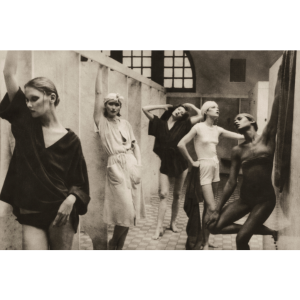Review; It’s True, It’s True, It’s True – Theatre Performance
By Dean Frankling
The reader will have to forgive this review being penned by a latecomer to theatre performance productions. While this might be my first experience of one, this review shall tend to those who frequently attend theatre performances as well as other newcomers, where my now realised affection for theatre productions has been brought out of me by Breach Theatre’s It’s True, It’s True, It’s True production.
If a single theatre production can ultimately change the preconceptions of one newcomer – is that not worth this review? A review that considers, breaks down, and intends to transport the reader into the mind of someone new to, and indeed, someone who is ready to learn more of the theatre scene? The It’s True theatre performance deserves the commentary of the frequent attendee, but also, and perhaps more importantly, the effect it has on someone who has never engaged in performances until seeing It’s True.
It’s True is about a 17th Century rape trial between Artemisia Gentileschi, the victim, and Agostino Tassi, the perpetrator, that is overlooked by a judge. Using an all-female cast of three actors; Ellice Stevens, Harriett Webb and Kathryn Bond, this drama around rape, treatment of women, and male dominance demonstrates how little has changed since Renaissance Rome and the contemporary world.
“The power they have…”
Each of the three actors interchange between the different roles of the victim, perpetrator and the judge, delivering a different acting style as soon as they switch characters, occurring at the sound of eclectic rock music. The set up is quickly understood, realising who is who at the intervals with the foldable stairs. This change in the actor’s style allows us to experience the performance in all its might; you anticipate the next change, engaging with each actor’s style, and soon after begin to have a preference for which actors you prefer the most in each role. Each performance is unique, as is obvious between different actors, but seeing the consistently changing style of the actor’s is both entertaining and inspiring.
And yet, despite the seriousness of the performance you expect it to be the tone of the performance is also comedic. The near-full nakedness of – Ellice Stevens as Artemisia Gentileschi in the middle of the play is a pinnacle moment, one that unexpectedly becomes comic when loud sexual music plays and hilariously critiques the men assuming ‘women wanted it’ when it comes to sex versus rape. Her drastic movement between sexual poses while naked and the music is timed so perfectly from the serious scene beforehand and takes us by surprise – suddenly performing the role of a seductive woman who craves sex.
“You should be a good girl, not bring shame”
While the performance is based on the few surviving transcripts, the ones that are missing are filled in with a kind of ‘behind the scenes’ of Renaissance Rome – beyond the courtroom and in the actual world as it were. The dialogue is key in these scenes: they are constructed to not only fit within the performance but they exercise an underlying meaning of men and the perpetrator at the time. ‘You should be a good girl’ or ‘she thinks she can’ brings into question the female role in society. These constructed scenes are not there to simply serve as fillings of the missing transcripts or to discuss the treatment of women; but also offer commentary in the form of fierce, but not too fierce, feminist dialogue to question and sometimes destroy female stereotypes.
It is a formula of fiction and history with truth prevailing throughout.
“I think you imagine me as a woman who still gives to you”
Later in the performance Ellice Stevens gives a monologue as Artemisia Gentileschi, one that is perhaps the most important part of the performance, entirely built upon three words: it is true, repeated continuously like the endless ringing of a church bell which only stops once it has finished its tune. It is hard hitting, intense and powerful and steps up in gradual frustration in her long exclamation that it is simply true, against the disbelief and deceit that is tried upon her. As you sit there, embracing the chilling words that are repeatedly spoken, you become infused within the performance and gripped with the emotional intensity of it. It was a perfect ending to the trial that was shadowed by male disbelief and demonstrated female empowerment in the face of it.
The performances by Harriett Webb and Kathryn Bond were also excellent and their respective roles as judge and perpetrator suited them best. Harriett Webb as a kind of macho-styled version of Agostino Tassi established the mean-natured side of Tassi, along with a humour that did not at any point disrupt the seriousness and authenticity. Kathryn Bond as Agostino Tassi presented a distinctively evil sounding figure of machismo and deceit and was a perfect portrayal of the type of man the play intends to criticise.
“My lordship, I am going to show you what a woman can do”
The ending delivers the final blow with bombastic music and the dramatic head cutting of Agostino Tassi. It is the victory for women, a result that should have been given at the time; a reality that should have been but could not have been. It might not have been the actual demise of Tassi, but this play is a feminist Renaissance and a reality that almost felt real. To hear however, that Artemisia Gentileschi went on to become a prolific painter of her generation, is still a reality we are glad to hear.
Breach Theatre’s It’s True, It’s True, It’s True production is an emotional rollercoaster ride, boiled to the brim with passion, defiance and female empowerment in the face of men that never looks to turn down the heat.




